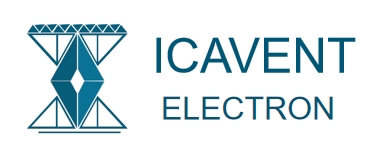Development Trends in the Capacitor Model Industry

I. Introduction
Capacitors are fundamental components in electronic circuits, serving as energy storage devices that can release energy quickly when needed. They play a crucial role in various applications, from smoothing out voltage fluctuations in power supplies to enabling high-frequency signal processing in communication devices. The capacitor model industry, which focuses on the design, manufacturing, and application of capacitors, has seen significant advancements in recent years. This article aims to explore the current and future development trends in the capacitor model industry, shedding light on how these trends are shaping the future of electronics.
II. Historical Context
The history of capacitors dates back to the 18th century with the invention of the Leyden jar, one of the first devices capable of storing electrical energy. Over the years, capacitor technology has evolved significantly, with key milestones including the development of electrolytic capacitors in the early 20th century and the introduction of ceramic and film capacitors in the mid-20th century. The transition from traditional to modern capacitor models has been driven by the increasing demand for smaller, more efficient components that can meet the needs of advanced electronic devices.
III. Current Trends in the Capacitor Model Industry
A. Miniaturization of Capacitors
One of the most prominent trends in the capacitor model industry is the miniaturization of capacitors. As consumer electronics continue to shrink in size, there is a growing demand for smaller components that can fit into compact designs. Advances in materials and manufacturing processes have enabled the production of capacitors that are not only smaller but also maintain or even enhance their performance. This trend is particularly evident in smartphones, wearables, and other portable devices, where space is at a premium.
B. Increased Capacitance and Voltage Ratings
With the rise of power electronics, there is an increasing need for capacitors that can handle higher capacitance and voltage ratings. This demand is driven by applications such as electric vehicles, renewable energy systems, and industrial automation, where performance and reliability are critical. Innovations in dielectric materials, such as the development of high-k dielectrics, have allowed manufacturers to produce capacitors that can operate at higher voltages and store more energy without compromising size or efficiency.
C. Development of Smart Capacitors
The integration of technology into capacitors has led to the emergence of smart capacitors. These devices incorporate sensors and Internet of Things (IoT) capabilities, allowing for real-time monitoring and management of energy usage. Smart capacitors can optimize energy storage and discharge, leading to improved efficiency in power systems. This trend is particularly beneficial in energy management applications, where the ability to monitor and adjust capacitor performance can lead to significant cost savings and enhanced sustainability.
D. Sustainability and Eco-Friendly Capacitors
As environmental concerns continue to grow, there is an increasing emphasis on sustainability within the capacitor model industry. Manufacturers are exploring eco-friendly materials and production processes to reduce the environmental impact of capacitors. Additionally, recycling and lifecycle management of capacitors are becoming more important, with initiatives aimed at minimizing waste and promoting the reuse of materials. This trend aligns with the broader movement towards sustainability in the electronics industry, where consumers are increasingly seeking environmentally responsible products.
IV. Technological Innovations
A. Advanced Materials
The use of advanced materials is revolutionizing the capacitor model industry. Materials such as graphene and other nanomaterials are being explored for their unique properties, which can enhance the performance and efficiency of capacitors. For instance, graphene-based capacitors have shown promise in achieving higher energy densities and faster charge/discharge rates compared to traditional materials. These innovations are paving the way for the next generation of capacitors that can meet the demands of increasingly sophisticated electronic applications.
B. Manufacturing Techniques
Innovations in manufacturing techniques are also playing a crucial role in the development of capacitors. The adoption of 3D printing and additive manufacturing is enabling the production of complex capacitor geometries that were previously difficult or impossible to achieve. Additionally, automation and Industry 4.0 technologies are streamlining capacitor production processes, improving efficiency, and reducing costs. These advancements are allowing manufacturers to respond more quickly to market demands and customize products to meet specific customer needs.
C. Simulation and Modeling Tools
The role of simulation and modeling tools in capacitor design and testing cannot be overstated. Advanced software solutions are being used to create accurate models of capacitor performance, allowing engineers to predict how capacitors will behave under various conditions. This capability is essential for optimizing designs and ensuring that capacitors meet the required specifications. As the complexity of electronic systems increases, the importance of accurate modeling for performance prediction will only grow.
V. Market Dynamics
A. Key Players in the Capacitor Model Industry
The capacitor model industry is characterized by a mix of established manufacturers and emerging startups. Leading companies such as Murata, Vishay, and KEMET have made significant contributions to capacitor technology, continuously innovating to meet market demands. At the same time, new entrants are bringing fresh ideas and innovative approaches to capacitor design and manufacturing, fostering a competitive landscape that drives further advancements in the industry.
B. Market Demand and Growth Projections
The demand for capacitors is expected to grow across various sectors, including automotive, renewable energy, and consumer electronics. As electric vehicles become more mainstream and renewable energy sources gain traction, the need for high-performance capacitors will continue to rise. Market analysts project significant growth in the capacitor model industry over the next decade, driven by these trends and the increasing complexity of electronic systems.
VI. Challenges Facing the Capacitor Model Industry
A. Supply Chain Issues
The capacitor model industry is not without its challenges. Supply chain issues, exacerbated by global events such as the COVID-19 pandemic, have impacted the availability of raw materials and components. Manufacturers are exploring strategies to mitigate these disruptions, such as diversifying their supply chains and investing in local production capabilities. Addressing these challenges will be crucial for ensuring a stable supply of capacitors to meet growing demand.
B. Competition and Market Saturation
As the capacitor model industry continues to evolve, competition is intensifying. New entrants and alternative technologies pose challenges to established manufacturers, necessitating a focus on differentiation and innovation. Companies must continually invest in research and development to stay ahead of the curve and meet the changing needs of consumers.
C. Regulatory and Compliance Issues
Regulatory and compliance issues also present challenges for the capacitor model industry. Manufacturers must navigate a complex landscape of regulations affecting capacitor production, including environmental standards and safety requirements. Ensuring compliance is essential for market access and maintaining consumer trust.
VII. Future Outlook
A. Predictions for the Next Decade
Looking ahead, the capacitor model industry is poised for significant advancements over the next decade. We can expect to see continued innovations in capacitor technology, driven by the need for higher performance, miniaturization, and sustainability. Additionally, the integration of smart technologies into capacitors will likely become more prevalent, enhancing their functionality and efficiency.
B. Role of Research and Development
Ongoing research and development will be critical for the future of the capacitor model industry. Collaboration between academia and industry will foster innovation and drive the development of new materials, manufacturing techniques, and design methodologies. As the industry evolves, the ability to adapt to changing market dynamics and consumer preferences will be essential for success.
VIII. Conclusion
In conclusion, the capacitor model industry is undergoing significant transformation, driven by trends such as miniaturization, increased performance requirements, and sustainability. As technological innovations continue to shape the landscape, manufacturers must navigate challenges related to supply chains, competition, and regulatory compliance. The future of capacitors in technology looks promising, with ongoing advancements poised to enhance their role in electronic systems. Stakeholders in the industry are encouraged to embrace innovation and sustainability to meet the evolving needs of consumers and contribute to a more sustainable future.
IX. References
A comprehensive list of academic papers, industry reports, and other sources used in the article would be included here to support the information presented and provide further reading for interested readers.
Development Trends in the Capacitor Model Industry

I. Introduction
Capacitors are fundamental components in electronic circuits, serving as energy storage devices that can release energy quickly when needed. They play a crucial role in various applications, from smoothing out voltage fluctuations in power supplies to enabling high-frequency signal processing in communication devices. The capacitor model industry, which focuses on the design, manufacturing, and application of capacitors, has seen significant advancements in recent years. This article aims to explore the current and future development trends in the capacitor model industry, shedding light on how these trends are shaping the future of electronics.
II. Historical Context
The history of capacitors dates back to the 18th century with the invention of the Leyden jar, one of the first devices capable of storing electrical energy. Over the years, capacitor technology has evolved significantly, with key milestones including the development of electrolytic capacitors in the early 20th century and the introduction of ceramic and film capacitors in the mid-20th century. The transition from traditional to modern capacitor models has been driven by the increasing demand for smaller, more efficient components that can meet the needs of advanced electronic devices.
III. Current Trends in the Capacitor Model Industry
A. Miniaturization of Capacitors
One of the most prominent trends in the capacitor model industry is the miniaturization of capacitors. As consumer electronics continue to shrink in size, there is a growing demand for smaller components that can fit into compact designs. Advances in materials and manufacturing processes have enabled the production of capacitors that are not only smaller but also maintain or even enhance their performance. This trend is particularly evident in smartphones, wearables, and other portable devices, where space is at a premium.
B. Increased Capacitance and Voltage Ratings
With the rise of power electronics, there is an increasing need for capacitors that can handle higher capacitance and voltage ratings. This demand is driven by applications such as electric vehicles, renewable energy systems, and industrial automation, where performance and reliability are critical. Innovations in dielectric materials, such as the development of high-k dielectrics, have allowed manufacturers to produce capacitors that can operate at higher voltages and store more energy without compromising size or efficiency.
C. Development of Smart Capacitors
The integration of technology into capacitors has led to the emergence of smart capacitors. These devices incorporate sensors and Internet of Things (IoT) capabilities, allowing for real-time monitoring and management of energy usage. Smart capacitors can optimize energy storage and discharge, leading to improved efficiency in power systems. This trend is particularly beneficial in energy management applications, where the ability to monitor and adjust capacitor performance can lead to significant cost savings and enhanced sustainability.
D. Sustainability and Eco-Friendly Capacitors
As environmental concerns continue to grow, there is an increasing emphasis on sustainability within the capacitor model industry. Manufacturers are exploring eco-friendly materials and production processes to reduce the environmental impact of capacitors. Additionally, recycling and lifecycle management of capacitors are becoming more important, with initiatives aimed at minimizing waste and promoting the reuse of materials. This trend aligns with the broader movement towards sustainability in the electronics industry, where consumers are increasingly seeking environmentally responsible products.
IV. Technological Innovations
A. Advanced Materials
The use of advanced materials is revolutionizing the capacitor model industry. Materials such as graphene and other nanomaterials are being explored for their unique properties, which can enhance the performance and efficiency of capacitors. For instance, graphene-based capacitors have shown promise in achieving higher energy densities and faster charge/discharge rates compared to traditional materials. These innovations are paving the way for the next generation of capacitors that can meet the demands of increasingly sophisticated electronic applications.
B. Manufacturing Techniques
Innovations in manufacturing techniques are also playing a crucial role in the development of capacitors. The adoption of 3D printing and additive manufacturing is enabling the production of complex capacitor geometries that were previously difficult or impossible to achieve. Additionally, automation and Industry 4.0 technologies are streamlining capacitor production processes, improving efficiency, and reducing costs. These advancements are allowing manufacturers to respond more quickly to market demands and customize products to meet specific customer needs.
C. Simulation and Modeling Tools
The role of simulation and modeling tools in capacitor design and testing cannot be overstated. Advanced software solutions are being used to create accurate models of capacitor performance, allowing engineers to predict how capacitors will behave under various conditions. This capability is essential for optimizing designs and ensuring that capacitors meet the required specifications. As the complexity of electronic systems increases, the importance of accurate modeling for performance prediction will only grow.
V. Market Dynamics
A. Key Players in the Capacitor Model Industry
The capacitor model industry is characterized by a mix of established manufacturers and emerging startups. Leading companies such as Murata, Vishay, and KEMET have made significant contributions to capacitor technology, continuously innovating to meet market demands. At the same time, new entrants are bringing fresh ideas and innovative approaches to capacitor design and manufacturing, fostering a competitive landscape that drives further advancements in the industry.
B. Market Demand and Growth Projections
The demand for capacitors is expected to grow across various sectors, including automotive, renewable energy, and consumer electronics. As electric vehicles become more mainstream and renewable energy sources gain traction, the need for high-performance capacitors will continue to rise. Market analysts project significant growth in the capacitor model industry over the next decade, driven by these trends and the increasing complexity of electronic systems.
VI. Challenges Facing the Capacitor Model Industry
A. Supply Chain Issues
The capacitor model industry is not without its challenges. Supply chain issues, exacerbated by global events such as the COVID-19 pandemic, have impacted the availability of raw materials and components. Manufacturers are exploring strategies to mitigate these disruptions, such as diversifying their supply chains and investing in local production capabilities. Addressing these challenges will be crucial for ensuring a stable supply of capacitors to meet growing demand.
B. Competition and Market Saturation
As the capacitor model industry continues to evolve, competition is intensifying. New entrants and alternative technologies pose challenges to established manufacturers, necessitating a focus on differentiation and innovation. Companies must continually invest in research and development to stay ahead of the curve and meet the changing needs of consumers.
C. Regulatory and Compliance Issues
Regulatory and compliance issues also present challenges for the capacitor model industry. Manufacturers must navigate a complex landscape of regulations affecting capacitor production, including environmental standards and safety requirements. Ensuring compliance is essential for market access and maintaining consumer trust.
VII. Future Outlook
A. Predictions for the Next Decade
Looking ahead, the capacitor model industry is poised for significant advancements over the next decade. We can expect to see continued innovations in capacitor technology, driven by the need for higher performance, miniaturization, and sustainability. Additionally, the integration of smart technologies into capacitors will likely become more prevalent, enhancing their functionality and efficiency.
B. Role of Research and Development
Ongoing research and development will be critical for the future of the capacitor model industry. Collaboration between academia and industry will foster innovation and drive the development of new materials, manufacturing techniques, and design methodologies. As the industry evolves, the ability to adapt to changing market dynamics and consumer preferences will be essential for success.
VIII. Conclusion
In conclusion, the capacitor model industry is undergoing significant transformation, driven by trends such as miniaturization, increased performance requirements, and sustainability. As technological innovations continue to shape the landscape, manufacturers must navigate challenges related to supply chains, competition, and regulatory compliance. The future of capacitors in technology looks promising, with ongoing advancements poised to enhance their role in electronic systems. Stakeholders in the industry are encouraged to embrace innovation and sustainability to meet the evolving needs of consumers and contribute to a more sustainable future.
IX. References
A comprehensive list of academic papers, industry reports, and other sources used in the article would be included here to support the information presented and provide further reading for interested readers.













